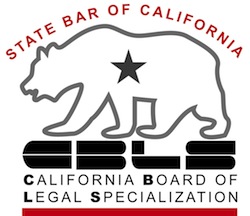 Tax attorney Bill Purdy says: don’t take IRS form 1099 at face value.
Tax attorney Bill Purdy says: don’t take IRS form 1099 at face value.
Hundreds of thousands of taxpayers at this moment are looking at, or thinking about, Form 1099-A or Form 1099-C documents they have received.
- Some arrived in the tax year a debt was allegedly cancelled.
- Others are issued by financial instructions many years after they should have been issued.
- Some should never have been issued at all.
Some taxpayers “feel” or outright suspect these 1099 forms must be wrong somehow. Others are dutifully resigned to paying the ordinary income tax that follows the way the form was filled out.
Look again!
At least 50% of the forms issued by financial entities are wrong in one or more respects. Recently, the average number of defective forms coming across my desk is running 75%.
Consult with someone very knowledgeable before OR even after you have filed and/or paid.
Didn’t that debt go away?
Canceled debts can exact a high price at the moment the debt dies, or many years later.
Many people assumed that following the Late Great Financial Unpleasantness, debts dried up and blew away like weeds that died for lack of water.
Some debts actually did die legally speaking. But even dead weeds can choke a garden.
Dead debts, like dead weeds, leave a stubborn root that looks bad on one’s credit record for a long time. That dead root runs deep and often has to be pulled or dug out.
What lenders should do
Lenders are responsible for issuing Form 1099-A and Form 1099-C. They are legally responsible for issuing these forms timely and accurately.
What happens if they don’t do so, you ask?
Absolutely nothing.
Given lenders and financial institutions of all kinds face no consequences if they don’t issue forms with the right information, there seems to be no incentive to get it right.
At least every other form 1099 of this type that I’ve seen in the last 10 years has been wrong in at least one, if not multiple, respects. Worse still, the vast majority of the errors are to the detriment of YOU the recipient/borrower.
Five frequently occurring errors
I hope this article gets readers’ financial juices flowing to the point where they double-check the reality of 1099’s.
Here’s a list of errors deserving of Dishonorable Mention for California taxpayers. While there isn’t time to review these in detail, here’s the gist of each error and the likely effect:
1. California Statutory Purchase Money Debt Cancelled: Under California law, borrowers have no personal liability for loans used to purchase their residence. CCP 580(b). Yet following a foreclosure or a short sale, the 1099 form clearly (AND INCORRECTLY) says the borrower is personally liable for the debt. The cancellation of purchase money debt should trigger no tax. But the form claims otherwise.
2. Debt Discharged in Bankruptcy: Lenders issue tax documents that blissfully ignore fact that debt was discharged during bankruptcy proceeding. In 2019, 1099 forms make no reference to debts discharged in bankruptcy. Thus taxpayers may not know relief from these debts is typically NOT taxable when the relief occurs in a bankruptcy proceeding.
3. Accrued but Unpaid Interest Forgiven: This is an odd exception but a very important one. There is no taxable debt relief to the extent payment of the amount forgiven would have been deductible to you the debtor. IRC Section 108(e).
Interest on home mortgages is the best example of this one. It is Box 2 on Form 1099-A and Box 3 of Form 1099-C. Especially in the case of mortgages that negatively amortized for years, the actual amount of forgiven principal is often far less than what is shown on the form thus reducing the amount of taxable debt relief.
4. Fair Market Value of the Property: Without going into great detail here, this number radically affects whether there is any taxable debt relief and the amount of it (if any). Financial intuitions use a dart boards, Ouija boards, soothsayers, the entrails of an owl, and basically any number they feel like using for the fair market value. Frequently the number supplied is ludicrously inaccurate AND on the low side. This usually increases your taxable debt relief. (Box 4 Form 1099-A Box 7 on Form 1099-C.)
5. The Old “Identifiable Event Ploy”: This is Box 1 on Form 1099-A and 1099-C. It is supposed to have the date that the debt relief actually occurred. It often has the date the creditor gets around to writing the debt off on their books and issuing the Form 1099-A or C.
Look at these instructions from the 2019 Form 1099-C:
“If an identifiable event has occurred but the debt has not actually been discharged, then include any discharged debt in your income in the year that it is actually discharged, unless an exception or exclusion applies to you in that year.”
Yes! That means lenders send out Forms 1099-A and 1099-C when an “event” occurs as far as THEY are concerned, not when debts are actually discharged by operation of law as with foreclosures, bankruptcies, and most California short sales.
This causes ABSOLUTE HAVOC. Many debtors believe they have lost the benefit of statutory exemptions that have now expired but hadn’t when the debt relief actually occurred.
Your to-do list
The rabbit hole goes deeper but please double check with a tax professional you can trust before you pay taxes based on these forms.
If you’ve already paid, explore filing an amended return.
The financial entities who prepared these forms do not give them even a cursory degree of care.
They did the same exact thing a decade ago when they booked millions of loans that should never have been made. Nothing happened to them then, and nothing will now.
It’s up to you.
Guest author Bill Purdy is a tax and real estate lawyer with Simmons and Purdy in Soquel, California. I’m tickled to share Bill’s pointed perspective on this tax problem too many face.
Bill and his partner Pam Simmons are my go-to resource for all matters of tax and mortgage law. Bill assists clients with outstanding federal and state income tax liabilities, Form 1099-A and 1099-C related issues, collection resolution, failure to file returns and employment tax related liabilities.
More from the Soapbox on tax issues
Tax deductions hidden in Chapter 13
The secret tax penalty for settling debt





